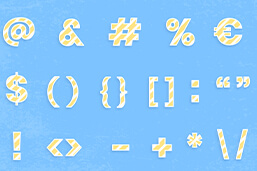
Apostrophes, a fundamental aspect of language rules, play a critical role in English writing. They are primarily used to denote possession and create contractions, thereby enhancing the precision and readability of sentences. Mastering the proper use of apostrophes is crucial for effective communication, avoiding ambiguity, and adhering to grammatical standards.
Definition: Apostrophes
The apostrophe is a punctuation mark used to denote possession or to replace letters or numerals. In terms of appearance, there are two different types of apostrophe typefaces, smart (‘ ’) or straight (‘ ‘), but their usage is the same. Smart apostrophes are usually the default on keyboards and are the preferred option of publishers.
Possessive apostrophes with singular nouns
The mark ’s in English is affixed following a common name or a proper name to express possession. In addition, the apostrophe before the s is governed by a few rules, especially when placed after a word in the plural.
Some possessive pronouns end on an -s e.g., yours, hers, his, and its. In this case, no apostrophes are used.
Possessive apostrophes with plural nouns
To denote possession when the possessor is a plural noun and ends on -s, the apostrophe is added at the end of the noun.
This rule is not valid for words whose plural does not end on -s.
When the possessor is a proper noun ending on -s, you can choose to append an ’s to it, in which case one will add the sound /z/ at the end of the noun or simply an apostrophe.
Apostrophes and possessive pronouns
Possessive pronouns are the exception to the rule. They indicate ownership of something, for example, mine, yours, its, and theirs.
It is incorrect to use an apostrophe with a possessive pronoun; however, there is an exception to the rule – the possessive ‘one’s’.
A letter ending, ‘Yours sincerely’ should never have an apostrophe and ‘it’s’ should only have one when indicating the contraction ‘it is’.
Sounds confusing? It is, but the rule of thumb regarding possessive pronouns is to ask yourself if the apostrophe replaces a letter. If it doesn’t, don’t use it.

Apostrophes and joint possession
An apostrophe is required to show joint possession when a noun follows another noun. To show joint possession, you should only use an apostrophe with the last noun; to show individual possession, it is necessary to make all nouns possessive.
Apostrophes and contractions
The apostrophe is often used in the English language to form contractions or shortened versions of full words.
The contraction of words can be used in writing everyday day or colloquial language.
Apostrophes to form plurals
As a general guideline, you should never use an apostrophe when writing plural forms.
Possessive pronouns vs. contractions
The following pronouns show possession and never require an apostrophe: hers, his, its, ours, theirs, whose, yours.
An apostrophe is used with a pronoun; it always indicates a contraction.
Contractions show the omission of letters when two words are combined.
In UK English, using an apostrophe to pluralize dates is also incorrect.
FAQs
- Smart apostrophe typeface: ‘ ’
- Straight apostrophe typeface:‘
The apostrophe is used in three ways:
- to form possessive nouns
- to show the omission of letters
- to indicate plurals of letters, numbers, and symbols
Do not use apostrophes to form possessive pronouns (i.e. his/her computer) or noun plurals that are not possessive.
It’s often misunderstood that the plural noun only needs an apostrophe in case of possession. For example:
- Apple’s for sale.
- Apples for sale.
“It’s” is misused when there is no contraction. For example:
- The car is broken, it’s number is damaged.
- The car is broken, its number is damaged.

